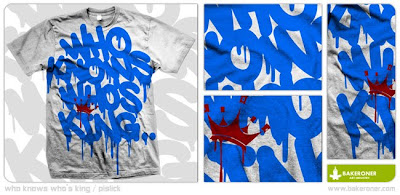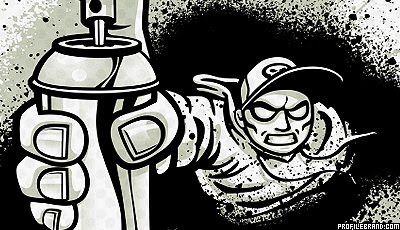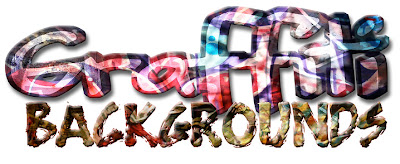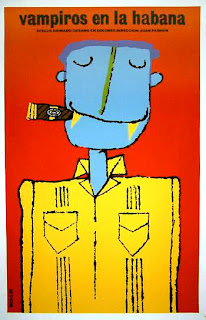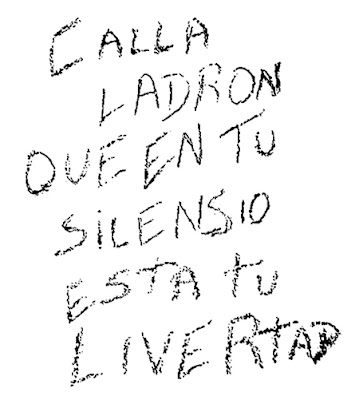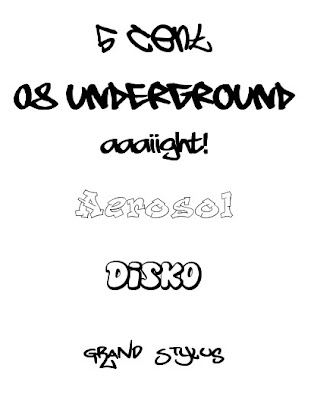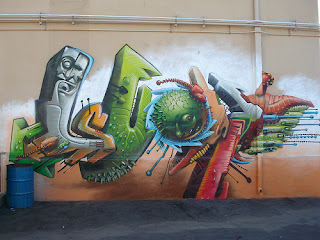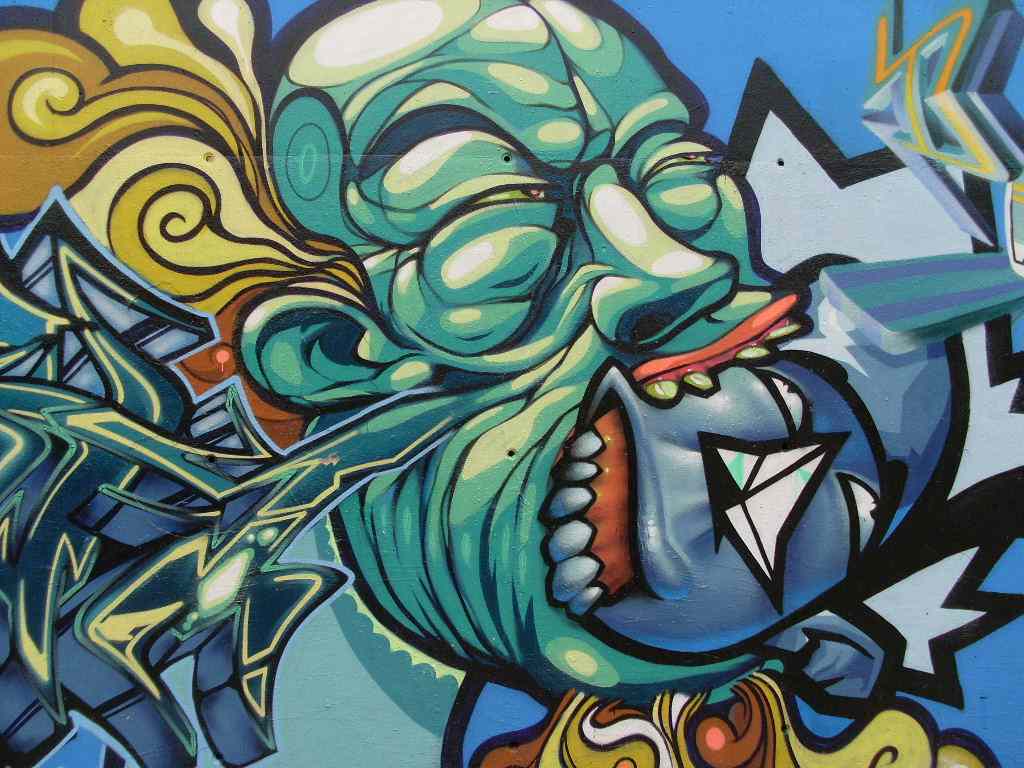Tuesday, May 31, 2011
Blue Bubble Graffiti Letter "Who Knows" by Bakeroner
Labels:
Graffiti bubble,
Graffiti Letters
Monday, May 30, 2011
Graffiti Letter "Rapalist" Wall by Bakeroner
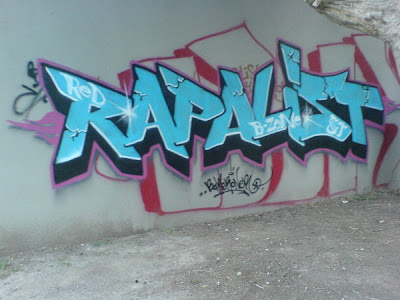
Graffiti Letter "Rapalist" Wall by Bakeroner
Please give your comments about this graffiti image, Thanks....
Labels:
Graffiti Letters
Baker - SKC Graffiti Wall Street by Bakeroner
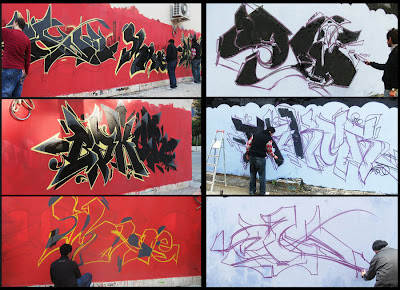
Baker - SKC Graffiti Wall Street by Bakeroner
Please give your comments about this graffiti image, Thanks....
Labels:
Graffiti Wall
T-Shirt Bubble Graffiti Design by Bakeroner Art Industry
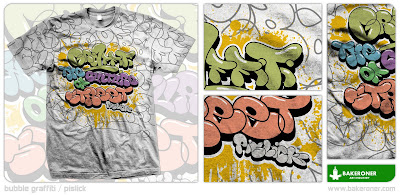
T-Shirt Bubble Graffiti Design by Bakeroner
Please give your comments about this graffiti image, Thanks....
Labels:
Graffiti bubble
Sketch Graffiti Letter "Tase Clan" by Bakeroner
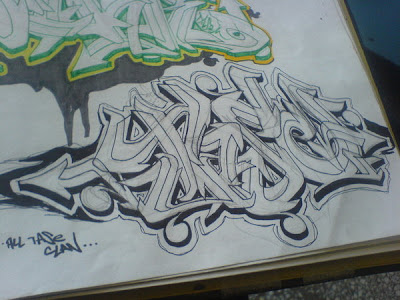
Sketch Graffiti Letter "Tase Clan" by Bakeroner
Please give your comments about this graffiti image, Thanks....
Labels:
Graffiti Letters,
Graffiti Sketch
Tuesday, May 24, 2011
Monday, May 23, 2011
Letters Effect of Graffiti Backgrounds
Labels:
Graffiti Letters
Neon Light Graffiti Background - Wallpapers
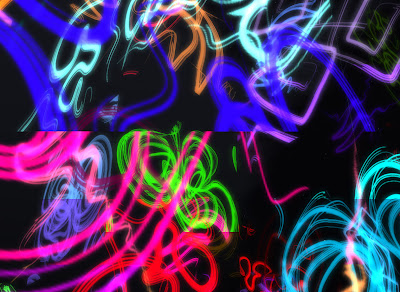
Neon Light Graffiti Background - Wallpapers
Please give your comments about this graffiti image, Thanks....
Labels:
Graffiti Wallpaper
Chapter 36 - Art of Posters for Films - the Cuban School
The Cuban school of Film posters started after the Cuban Revolution of 1959, with the pioneering works of gaphic designers such as, Eduardo Mu�oz Bachs, Antonio Perez known as �iko, Antonio Fern�ndez Reiboro, Ren� Azcuy Cardenas, and Raul Martinez Gonzales among others. The most important impetus came from the establishment of El Instituto Cubano de Arte e Industria Cinematogr�ficos (ICAIC), the Cuban Art Institute of cinematography, by the Cuban revolutionary leadership in 1960. The bold, aesthetically powerful, stunningly balanced compositions, and thought provoking posters are the main features of the Cuban school.
Zoro, 1976
Zatoichi challenged! , 1967
Cr�a cuervos , 1976
Bach joined the animation department of ICAIC, upon its inception in 1960. His distinguished career as the most prolific ICAIC poster designer was launched by his creation of the first ICAIC poster: Historias de la Revoluci�n in 1960. Bach spent his entire career at the ICAIC, except for a brief period between 1962 to 65, when he joined the advertising department of Agencia intercomunicaciones, while continuing to make occasional posters for the ICAIC. Having a friendly attitude, and eager to accept and respond rapidly to various projects he created a large body of work, that has never been cataloged.
Vampiros en la Habana, 1985
The Enigma of Kaspar Hauser, 1974
Gigi, 1958
The Lovers of Hiroshima/A Record of Love and Death, 1966
Using powerful compositions enhanced by a rich and vibrant pallet of five to six colors together with an elegant handwritten typography his silkscreen posters are archetype of an aesthetically potent visual communication. It is estimated that over two thirds of his posters include a handwritten typography, which allowed him to quickly submit a finished model when orders came especially during emergencies. He also worked as graphic designer of children's books. Bachs' work has been recognized internationally. In 1968, he won the bronze medal in a children books' competition in Varna, Bulgaria, as well, in 1986, he won the second prize in an International Competition of book illustrations for Youth, in Japan. But it is also true that many of his posters have a monumental character, quality first showing. During his career, Bachs has participated in numerous national and international exhibitions such as Exposici�n International Graphic Arts (Brno, Tchescoslovaquie), the International Poster Biennale (Warsaw, Poland) and the International Biennial of Lineup (Lahti, Finland). He also won several prestigious awards for his movie posters including, the First International Prize Filmexpo Ottawa in 1972, the First Prize at the International Competition in Paris movie posters and the First Prize at the international film posters in the US, in 1978. He died in Havana on July 22, 2001.Antonio Perez -- �iko
Antonio Perez -- �iko, was born in Havana, Cuba in 1941. He studied History of Art at University of Havana, and has taught at Universidad Veracruzanas' Jos� Antonio Echeverr�a Politechnical Institute, Instituto Superior de Arte de la Habana, Instituto Superior de Diseno Industrial, and Gestault School of Design in Xalapa. Closely associated with ICAIC, since 1968, he has made posters for Cuban and foreign films as well as revolutionary political posters during the 1960- 70 era. He is currently living in Mexico.
Che, 1983
Pablo,
De alg�n tiempo a esta parte
�iko is mainly interested in social posters, but he has also created a number of memorable posters for films. He participated in the International Film Poster Exhibition, at Ottawa, in 1972, where he won an Award of Merit. Five years later his works were exhibited in Paris at Centre national d'art et de culture Georuges Pompido. As well, he has exhibited at Bienal Internacional del Cartel en Mexico (1989, 1992, 1994, 1996, 1998), International Poster Biennale, Warsaw (1994) and Lahti Poster Biennale (1995). Frenesi, Poster for Alfred Hitchcock's Frenzy,1972.
el oscaso de los cheyennes, Poster for John Ford's Cheyenne Autumn, 1964.
Poster for James Whale's Frankenstein
Contratenor
In 1983 �iko won National Culture Award of Cuba, and in 1992, he won the second prize, Bienal Internacional del Cartel en Mexico. Other prizes include Special Prize (group) First Contest of Movie Posters, Cannes, 1973; Special Prize (group) Contest of Movie Posters, 1974; Prize of Second International Biennial of Movie Posters, Cannes, 1974; Prize at Second International Biennial of Posters, Mexico, 1974; First Grand Prize Paris International Festival II, 1976. He has published the Book of Catalog (�ico Carteles, 1998), Expo Jir�fica Catalog, 1999. Expo France Catalog, 1999 and essays about the culture of Veracruz Plastic, 2000. Antonio Fern�ndez Reiboro
Antonio Fern�ndez Reiboro was born in Nuevitas, in Camag�ey, Cuba in 1935. His parents Antonio Fern�ndez de la Fuente, the owner of "La Francia", a department store, and Julia Robiro Varquez were Spanish emigrants to Cuba. Antonio began to work as a graphic designer at La Francia, while studying architecture and design at the University of Havana. He worked a as a designer for Flogal Department store an Olivetti in Havana, and during 1960-63, joined as an assistant to the architect Ricardo Porro in the construction of National School of Art in Havana, and in 1963 designs the poster for for the 7th International Congress of Architecture. In 1964 he joined the ICAIC as poster designer. He designed the Cuban pavilions in the Leipzig Trade Show in 1965, and in Tokyo in 1067.
Reiboro has been a prolific poster designer, who was among the first artists abandoning Socialist Realism. He has won numerous awards such as Prix Special Prize at Ottawa international Film Festival in 1972, Merit Prize, at Cannes' XXVII International Film Festival in 1974, Grand prize for poster exhibition at Cannes' XXVIII Internatinal Film Festival, and Grand Prize at Paris Internatinal Poster Exhibition in 1975. In 1982, Reiboro migrated to Spain and began to work at the Ministry of culture. He has also directed several films.
Ren� Azcuy Cardenas
Paul Ren� Azcuy Cardenas was born in Havana, Cuba, in 1939. In 1955, he entered the National School of Fine Arts (Escuela Nacional de Bellas Artes), at San Alejandro, Havana -- the oldest and most prestigious fine arts school in Cuba and at the very same year, 1955 he entered for a two years course at the College of Arts and Crafts in Havana. He also studied at the School of Psychology at the University of Havana. Over the period 1964-83 Cardenas worked as a Graphic Designer for the ICAIC. He has taught at the School of Architecture at Universidad Metropolitana Xochimilco, Benem�rita University of Puebla. Pacific University of Chile, the Higher Institute of Applied Arts
Hungary, the Oriental Institute of Naples in Italy, Escuela Superior of Graphic Design in Rosario in Argentina, University of Quebec in Montreal, Canada and Colegio Universitario de Segovia in Spain. In 1992 he served as a judge of the Second International Poster Biennale at Mexico, and in 1996 acted as a member of the Organizing Committee for the Fourth International Poster Biennale at Mexico.
Hungary, the Oriental Institute of Naples in Italy, Escuela Superior of Graphic Design in Rosario in Argentina, University of Quebec in Montreal, Canada and Colegio Universitario de Segovia in Spain. In 1992 he served as a judge of the Second International Poster Biennale at Mexico, and in 1996 acted as a member of the Organizing Committee for the Fourth International Poster Biennale at Mexico.
Cardenas' Solo Exhibitions include his 1977 exhibition ''The hands of Azcuy " at Sala Rub�n Mart�nez Villena,UNEAC Gallery , in Havana, and his 1988,''show "Ren� Azcuy Affiches" at the Maison de L'Amerique Latine, in Paris, France. He has also participated in a number of group shows. Among the awards and honors he has received are: Poster Prize in 1966. World Chess Olympiad, Havana, 1968 Poster and logo Prize of Cultural Congress in Havana, 1974 Award from International Film Poster Exhibition in Ottawa, the 1974 First Prize of the International Film Poster Competition from the Hollywood Report, Los Angeles, the 1984 First Prize Coral of the Sixth Latin American Competition for Film Posters at the Sixth International Festival of New Latin American Cinema, Havana. Cardenas works are at many international galleries including the Center for Cuban Studies in New York, the George Pompidou Centre in Paris, Library of Congress in Washington and the Poster Museum, at Wilanow, Warsaw.
Throughout his career Ren� Azcuy has focued primarily in black and white compositions. In fact, this has been the hallmark of his artistic expression in a visual communication paradigm. In his posters Ren� Azcuy is particularly interested in the expression conveyed by hands as well as the exaggerated facial expression as the main feature of his main thematic compositions, which may include; the open hand, holding hands, fist, and various hand gestures associated with imploring, quarreling, threatening, rage, fear and a wide range of other human experiences or various expression of silence, suspicion, sadness and so on, which reveal his deep understanding of human drama.
Ra�l Mart�nez Gonz�lez
Ra�l Mart�nez Gonz�lez, was born in Ciego de �vila and studied in Havana and at the Art Institute of Chicago. His early works were abstract, but he moved towards figurative design later in his career. After the Cuban Revolution of 1959, Mart�nez participated in the establishment of the ICAIC. He was influenced by the growing pop-art movement, and used this style in a number of his magazine, book and poster designs. Many of his works carried the themes and iconography of the Cuban revolution, using vibrant colors and comic book themes. In 1966 Mart�nez began the first of many designs based around the image of national hero Jos� Mart�. Works by Ra�l Mart�nez are on exhibit in museums throughout the world. He had a large number of solo and group exhibitions, including an exhibition of his drawings and designs at the Center of Cuban Studies in New York in 1975. He won the Silver Medal in the Cuban Painting Exhibition at Tampa University, Florida. Cuba�s National Museum of Fine Arts dedicates a large space in the permanent collections halls to Ra�l Mart�nez.
In the early 1950s, Mart�nez�along with such artists as Guido Llin�s and Tomas Oliva�established the group Los Once (The Eleven), whose members adapted New York School-style Abstract Expressionism in the context of Cuban art. After the success of the Cuban revolution in 1959, Mart�nez moved to advertisement, and his success provided him the opportunity to assume the art direction of the literary magazine, Lunes de Revoluci�n. Meanwhile, he continued to produce large abstract paintings. However, with his 1964 "Homage" series, Mart�nez began to use collage with a wide array of images, including; furniture, magazine covers, family photos, and everyday objects, fused with the spontaneous aesthetic of the revolutionary graffiti and street art of Havana.
Mart�nez�s 1968 film poster design for �Lucia;� was reproduced in the 1970 book The Art of the Revolution, with a preface by Susan Sontag. As an artistic photographer, he participated in the influential Foto-Mentira exhibition of 1965 and for the Venice Biennale of 1984, he participated with a mural design. With his 1978 �La Gran Familia,� he began to integrate photography into his art, in which he juxtaposed the faces of Cuban youth along with their leaders, the mural is now at the permanent collection, of El Museo Nacional de Bellas Artes, in Havana. He died in 1995.
Go to the next chapter; Chapter 37 - the Polish School and the Polish Art of Opera, Film and Circus Posters
------------------------------------------------------------------------------------
This work is licensed under a Creative Commons Attribution-No Derivative Works 3.0 Unported License.
Thursday, May 19, 2011
Wednesday, May 18, 2011
Colorful Letras En Graffiti Wallpaper
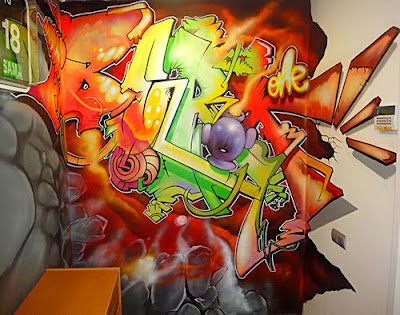
Colorful Letras En Graffiti Wallpaper
Please give your comments about this graffiti image, Thanks....
Labels:
Graffiti Wallpaper
Monday, May 16, 2011
Chapter 35 - Grafitti and Street Art
Graffiti has become a common stepping stone for many members of both the art and design community in North America and abroad. Within the United States Graffiti Artists such as Mike Giant, Pursue, Rime, Noah and countless others have made careers in skateboard, apparel and shoe design for companies such as DC Shoes, Adidas, Rebel8 Osiris or Circa. Meanwhile there are many others such as DZINE, Daze, Blade, The Mac that have made the switch to gallery artists often times not even using their initial medium, spray paint. According to Marc Ecko, an urban clothing designer, who has been an advocate of graffiti as an art form; "Graffiti is without question the most powerful art movement in recent history and has been a driving inspiration throughout my career." Of course, writing and painting pictures on the walls have a long history, but creation of modern spray paints and other coloring media have given a new impetus to this activity and have even raised it to the art status. Shortly after the death of Charlie Parker the great saxophone player in Jazz scene, whose nickname was "Bird", graffiti began to appear around New York with the words "Bird Lives". In Paris, during the student protests and general strike of May 1968 graffiti slogans such as L'ennui est contre-r�volutionnaire ("Boredom is counterrevolutionary") was sprayed on the walls. In the streets of London and Paris the Iranian dissidents graffiti of "Down with the Shah" was a familiar scene during the 1970s, and in the U.S. a popular graffiti during this time was the legend "Dick Nixon Before He Dicks You".
Street artists have challenged art by situating it in non-art contexts. The Graffiti in particular is usually associated with the anti-establishment. However, the aim of graffiti or street art is not to change the definition of an artwork, but rather to question the existing environment with its own language. They attempt to have their work communicate with everyday people about socially relevant themes in ways that are informed by esthetic values without being imprisoned by them. Nevertheless, some artists have become part of the main stream. For instance, graffiti artists Lee Quinones and Fab 5 Freddy were given a gallery opening in Rome by art dealer Claudio Bruni. Fab 5 Freddy and Futura 2000 took hip hop graffiti to Paris and London as part of the New York City Rap Tour in 1983. The emergence of the new stencil graffiti genre around 1981 by graffiti artist Blek le Rat in Paris was another landmark in the recognition of this art form and by 1985 stencils had appeared in other cities including New York City, Sydney and Melbourne, where they were documented by American photographer Charles Gatewood and Australian photographer Rennie Ellis. In 1981, Washington Project for the Arts held an exhibition entitled Street Art, which included John Fekner, Fab Five Freddy and Lee Quinones working directly on the streets. Fekner, a pioneer in urban art, is included in Cedar Lewisohn�s book Street Art: The Graffiti Revolution, which accompanied the 2008 Street Art exhibition at the Tate Modern in England, of which Lewisohn was the curator.
With the popularity and legitimization of graffiti has come a level of commercialization. In 2001, computer giant IBM launched an advertising campaign in Chicago and San Francisco which involved people spray painting on sidewalks a peace symbol, a heart, and a penguin (Linux mascot), to represent "Peace, Love, and Linux." However due to illegalities some of the "street artists" were arrested and charged with vandalism, and IBM was fined more than US$120,000 for punitive and clean-up costs. In 2005, a similar ad campaign was launched by Sony and executed by TATS CRU in New York, Chicago, Atlanta, Philadelphia, Los Angeles and Miami to market its handheld PSP gaming system. In this campaign, taking notice of the legal problems of the IBM campaign, Sony paid building owners for the rights to paint on their buildings "a collection of dizzy-eyed urban kids playing with the PSP as if it were a skateboard, a paddle or a rocking horse." Keith Haring was another well-known graffiti artist who brought Pop Art and graffiti to the commercial mainstream. In the 1980s, Haring opened his first Pop Shop: a store that offered everyone access to his works�which until then could only be found spray-painted on city walls. Pop Shop offered commodities like bags and t-shirts. Haring explained that, "The Pop Shop makes my work accessible. It's about participation on a big level, the point was that we didn't want to produce things that would cheapen the art. In other words, this was still art as statement".
Blu is an Italian street artist from Bologna. His graffiti art, using spray paint appeared in 1999. He gradually developed his own distinct style with house paint. Using rollers mounted on top of telescopic sticks, he depicts monstrous degenerated characters with a dark sense of humor.
In 2004, his work was noticed by some art galleries which offered him solo-exhibitions. He has said of his work;
my painting are reflecting more than what I could say with words. Personally I try live without making violence on anyone. I see two really dangerous things in the world: fear and rage. Everyone can be easily controlled through these emotions, especially in this historical moment.
Go to the next chapter; Chapter 36 - Art of Posters for Films - the Cuban School
----
Ben Eine
Ben Flynn, his work under signature "Eine", was born in 1970 in London, England. One of London�s most prolific and interesting street artists, Eine is known for his "street typography". He started as vandal when he was fifteen, leaving his first tag all over London before eventually developing a distinct typographic style. His bright, colorful letters have been painted on the street walls around in many cities, among them Los Angels , San Francisco, Paris, Dublin, Tokyo, Stockholm and London.
Eine has exhibited at White Walls gallery in San Francisco, and his works was included in the biggest exhibition of street art to date �Art in the Streets� at the Museum of Contemporary Art (MoCA), Los Angeles. David Cameron has presented one of Eine's works to President Obama as a gift on his first official state visit. The Middlesex Street in London, which is decorated with his trademark colours and typography is described by The Times as �a street now internationally recognized as a living piece of art with direct links to The White House.�
------------------------------------------------------------------------------------
This work is licensed under a Creative Commons Attribution-No Derivative Works 3.0 Unported License.
Subscribe to:
Comments (Atom)
